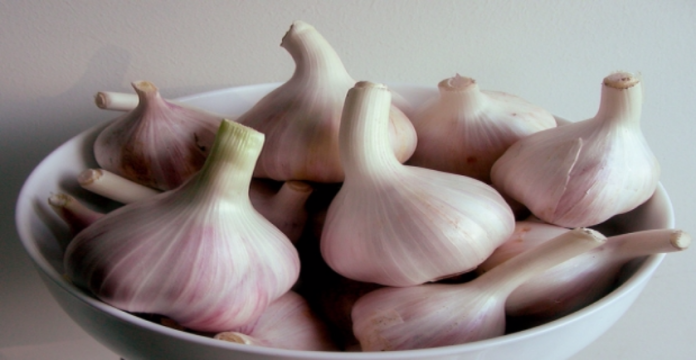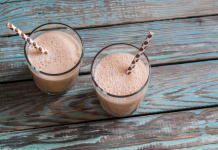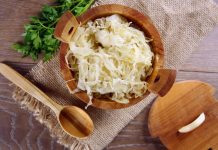
Antibiotics are compounds that fight bacterial infections, and in the world of pharmaceuticals, they have long been viewed as life-saving drugs. For decades, antibiotics have been called upon to destroy the microorganisms that cause bacterial pneumonia, bacterial meningitis, cellulitis, middle ear infections, chlamydia, gonorrhea, and urinary tract infections, among others.
However, it’s time to seriously consider alternatives to antibiotics. Why? One reason is that the popularity of antibiotics and their “star status” eventually caused them to be overprescribed. Even though antibiotics are only effective against bacteria, people began to demand the medications for conditions or symptoms caused by viruses or fungi, for which the compounds have no impact, such as the common cold, cough, and flu. Doctors wrote the scripts.
Also read about doctors improperly prescribing antibiotics for viral infections
Unfortunately, one of the unintended consequences of these actions is antibiotic resistance. (Widespread use of antibiotics in animal foods largely contribute to this problem). Antibiotic resistance is a critical public health issue around the world. Even taking a short course of antibiotics can result in resistant bacteria populating the gut for up to four years or longer.
This phenomenon occurs when bacteria change in ways that reduce or eliminate the effectiveness of the drugs designed to destroy them. Basically, while many people believe antibiotic resistance means the body becomes resistant to the drugs, what really happens is that the bacteria thumb their nose at the drugs and continue to multiple in patients, resulting in a worsening of their condition and even death.
In fact, 2 million or more people in the United States become infected with antibiotic-resistant bacteria each year, and at least 23,000 individuals per year die as a result of these infections, according to the Centers for Disease Control and Prevention. Nearly every type of bacteria is now more resistant to antibiotic treatment than they were in the past. Approximately 70 percent of bacteria that cause infections in hospitals don’t respond to at least one of the drugs most commonly used to treat infections.
Another problem with antibiotics is their side effects. These can range from mild to severe, depending on the drug class and the individual. One study reported that side effects associated with antibiotic use resulted in more than 142,000 emergency department (ED) visits and more than 140,000 ED admissions per year in the United States. About one-half of those visits were associated with use of the penicillin class of drugs and 80 percent of visits were related to allergic reactions.
Read about the end of antibiotic effectiveness
One way to avoid use of antibiotics marketed by pharmaceutical companies is to choose natural antibiotics. These alternatives could allow you to bypass the problems with antibiotic resistance and side effects. A wide variety of common symptoms such as sore throat, urinary tract infections, mild wounds, and sinus problems often do not need to be treated with harsh antibiotics and respond well to natural options.
Natural antibiotics
Natural antibiotics can strengthen your immune system, fight bacterial infections, and protect the population of friendly bacteria living in your gut, which in turn supports overall immune function. Here are just a few of the available natural antibiotics you can consider. Be sure to discuss your use of natural antibiotics with a knowledgeable healthcare provider. While natural antibiotics can be helpful for everyday infections, they should not be used for life-threatening conditions.
1. Colloidal silver consists of silver particles suspended in liquid. This mineral has been used since ancient times as an antimicrobial, and in recent years experts have been looking for the scientific basis behind this claim. Although use of colloidal silver is still controversial, numerous studies have shown it to be effective. A 2013 report from Medical News Today noted that low doses of silver can enhance the fighting power of antibiotics by up to 1,000 times. Use of colloidal silver also may help an antibiotic successfully eliminate otherwise antibiotic-resistant bacteria.
Silver acts by disrupting the metabolism of bacteria and by making bacteria’s cell membrane more permeable. Colloidal silver is also effective as an antiviral and antifungal agent. This natural antibiotic should be used with guidance from a healthcare professional, as it may cause the skin to turn blue-gray. It is best used for external conditions, such as ear infections and skin infections.
2. Garlic: This pungent herb doesn’t just keep vampires at bay; it has been shown to be as effective as various traditional antibiotics, such as erythromycin, penicillin, streptomycin, and tetracycline. What makes garlic so powerful? A recent study in the Journal of Immunology Research shows that garlic stimulates the activity of specific cell in the immune system, including eosinophils, lymphocytes, macrophages, and natural killer cells. The substance believed to be behind these immune-promoting powers is called allicin, a sulfur-containing compound. Garlic also enhances the growth of healthy bacteria in the gut by acting as a nutritional source (prebiotic).
3. Grapefruit seed extract: This natural antibiotic has been tested against numerous gram-positive and gram-negative organisms for its antibacterial abilities. In one study, the antibacterial power of grapefruit seed extract was similar to that of “proven topical antibacterials.” Another study noted that grapefruit seed extract is effective against the bacteria that cause Lyme disease (Borrelia burgdorferi). Grapefruit seed extract is available as capsules and a liquid concentrate.
4. Honey. The sweetness of honey goes beyond taste: it also has potent antibacterial properties that can help heal wounds. In a June 2015 article published in the journal Wounds, the authors explain that honey works to heal wounds on several levels. For example, it increases the release of oxygen from the blood, which reduces the possibility of tissue destruction and it also stimulates outflow of lymph, which carries away harmful bacteria.
The antibacterial activity of honey can be associated with hydrogen peroxide, which can be inactivated by enzymes in the blood and wound tissues; or methylglyoxal, which is not inactivated. Manuka honey is a source of methylglyoxal and has been found to be active against a wide range of bacteria. According to Dr. Mercola, research has shown that Manuka honey can eliminate more than 250 bacterial strains, including the highly resistant methicillin-resistant Staphylococcus aureus (MRSA) and Helicobacter pylori (which can cause stomach ulcers).
5. Olive leaf extract. A unique compound called oleuroein found in olive leaves has antioxidant, anti-inflammatory, antifungal, and antiviral characteristics. In fact, a recent (June 2015) study in Phytotherapy Research reported that along with oleuropein, other active compounds or synergistic effects” found in ethanol extracts of olive plant extracts may also “contribute to the anti-bacterial activity of the leaves and flowers.” Olive leaf extract is available as capsules, softgels, oil, and tablets.
6. Oregano oil. Of the more than 40 species of oregano available, the leaves and flowers of Origanum vulgare are often considered to be among the most beneficial. Look for oregano oil that is certified wild Mediterranean, which provides a mixture of species. Oregano oil has been shown to be helpful in treating foot and nail fungus (soak your feet in a small tub of water with a few teaspoons of oregano oil), parasites (place diluted oregano oil—1 drop per teaspoon—under your tongue for several minutes and then rinse), and sinus infections (breathe in steaming water that contains several drops of oregano oil). [Try a high quality Oregano Oil product like one from Naturally Savvy's partner North American Herb & Spice.]
7. Oregon grape. The Oregon grape (Berberis aquifoliium) is native to its namesake and contains berberine, a substance that has the ability to stop bacteria from sticking to the walls of the urinary and intestinal tracts. That makes Oregon grape supplements and tea a natural way to help eliminate urinary tract infections and help support the health of the digestive system.
8. Probiotics. One of the major side effects of using antibiotics is the destruction of bacteria—both beneficial and harmful. Unfortunately, when good bacteria are destroyed, it can place the immune system in chaos. One of the most effective ways to stave off this situation is to take probiotics in supplement form, as well as including foods containing probiotics in your diet.
When you introduce probiotics to your intestinal tract, you offer it an opportunity to restore the natural balance of microorganisms in the gut, inhibit the growth of disease-causing bacteria, enhance immune function, increase your resistance to infection, and support optimal digestion.
Lactobacilli and Bifidobacterium are the primary probiotic genera in the probiotic category and produce substances such as hydrogen peroxide, acetic acid, and lactic acid that enhance the acidity of the intestines and interfere with the production of harmful bacteria. They also produce bacteriocins, which destroy harmful microorganisms.
Read about maximizing effectiveness of probiotics
9. Turmeric. If you love curry, then you are likely familiar with turmeric and the main component that gives Indian food its distinct flavor: curcumin. A recent review in BioMed Research International noted that turmeric (Curcuma longa) and its compound curcumin have undergone extensive investigation and have been found to have antimicrobial activity against “different bacteria, viruses, fungi, and parasites,” all of which make it “a good candidate to enhance the inhibitory effect of existing antimicrobial agents.”
Antibiotic Do’s and Don’ts
Here are some tips to consider when using natural or conventional antibiotics.
- Talk to a knowledgeable healthcare provider before starting any antibiotics.
- If you have a condition that requires conventional antibiotics, ask your doctor if you can also use a natural antibiotic at the same time (especially probiotics!).
- If you take conventional antibiotics, also take probiotics to help restore the beneficial microorganisms in your gut.
- If you take conventional antibiotics, avoid sugar, white flour products, all refined carbohydrates, any yeast products or foods, vinegar, peanuts, mushrooms, cheese, and melons.
- Do not take antibiotics for a viral or fungal infection, as you will encourage the development of antibiotic resistance. Look for alternative ways to treat these infections.
- Do not take antibiotics that were prescribed for someone else. The drugs may not be appropriate for your condition.
Image via Isabel Eyre










